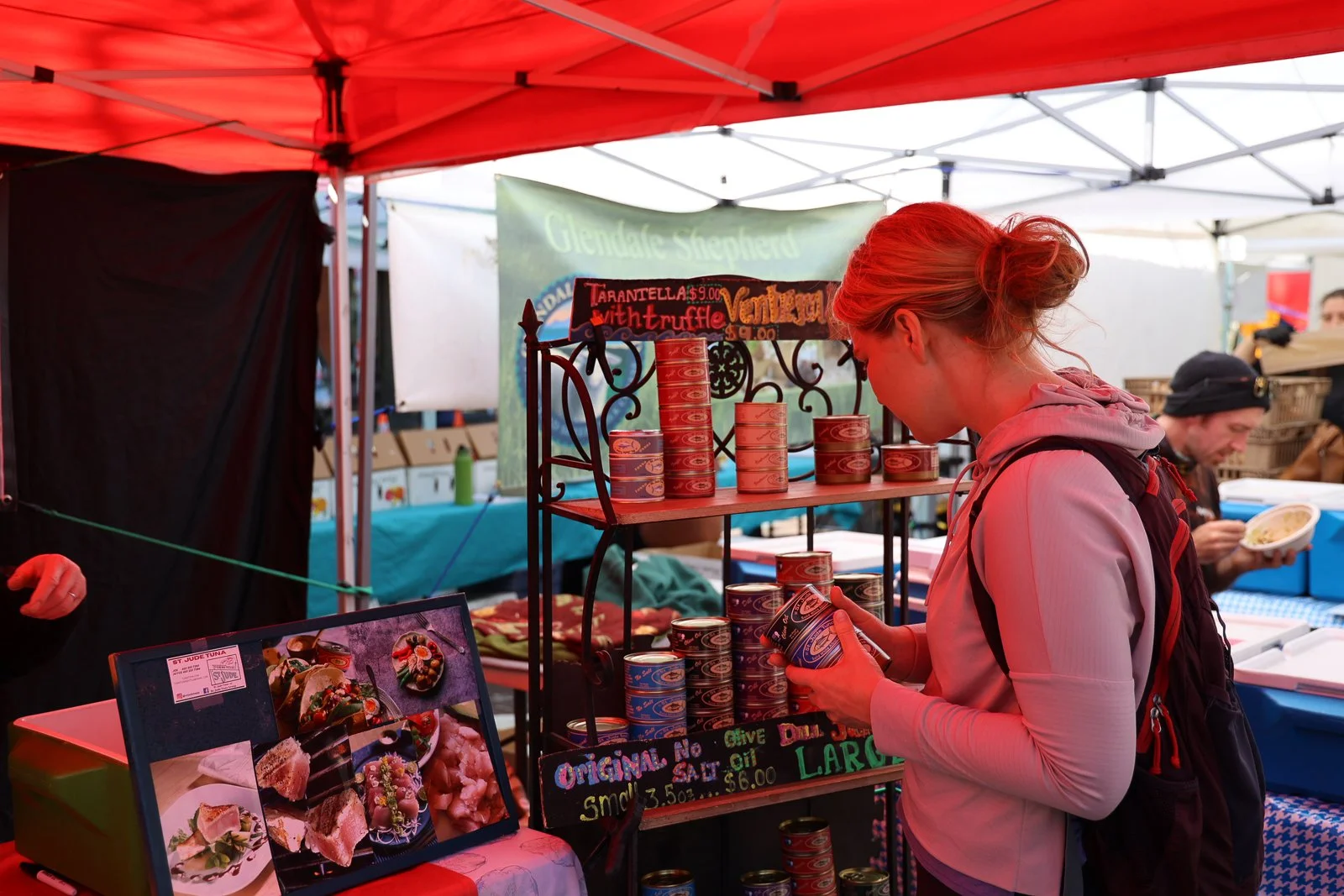“I have a certain amount of empathy for the fish,” says Malley from his seat around the galley table. It’s a sunny, crisp October afternoon for a Seattle dockside sale. The quick-to-smile South Pacific Islander crew are relaxed on deck, rousing when a customer approaches to buy their catch. Frozen loins and flavored cans are popular; steak medallions and even whole fish offered.
“They [fish] are good creatures,” says Malley. “And they are food. We figure we have a right to food. I guess that’s true. But when you catch a fish, I consider it a moral responsibility to optimize the utilization of that fish.”
If St. Jude rings a bell, you’ve probably seen their table at the Ballard Farmer’s Market or posts on social media announcing an incoming dockside sale. When in town, St. Jude sells their sushi-grade albacore directly to the public in addition to partnerships with whomever wants—and pays for—their topline product. James Beard-award chefs Maria Hines and John Sundstrom have been particular tuna customers with Seattle-area retailers like Whole Foods, QFC, Town & Country Market, and more.
“In the case of albacore tuna, there wasn’t any albacore tuna being sold in restaurants in America,” says Malley. But one need only look to the Japanese sushi and sashimi scene or the ceviche of Central and South America to realize this is an odd outlook on the fish. Abroad, albacore is a real prize.
“You wonder, is it the fish’s fault?” ponders Malley. “Well, it’s not the fish’s fault. It’s really because for years and years, the albacore fleet fished for the StarKist and Van de Camps and they produced a fish that really only belonged in a can. So now that that has changed and we do know how to make a sushi grade albacore, why don’t we try and put it on somebody’s plate and serve it at a first-class restaurant?”
Going indie isn’t just for hip urbane landlubbers. This regional ethos of cutting out as many big corporate middlemen as possible between the people and our food is as Cascadian as it comes. For Malley, it’s been a decades-long career of defying corporate practices since he bought St. Jude in 1990. This was the era of the “Chicken of the Sea” taglines and “Where’s Charlie?” jingles.
“We know all those stories and all of that marketing money was spent basically to convince people to eat their canned tuna,” says Malley. “And their canned tuna is… well… it’s a very inferior product to what can be made of albacore.”
The conventional, big business process for canning tuna is hot pack canning. As much tuna as possible is delivered from the sea to a cannery, usually at 20º above zero—frozen but not cold by Captain Malley’s sushi-grade standards. These fish tend to be the fully grown, larger adults that have less of the fatty goodness of the “lazy teenagers” Malley targets in the six- to twenty-pound range. The tuna are transported to a massive oven where they are cooked until white. At this point, the fish have essentially been steam boiled. A lot of those healthy and delicious oils and fats are toast.


